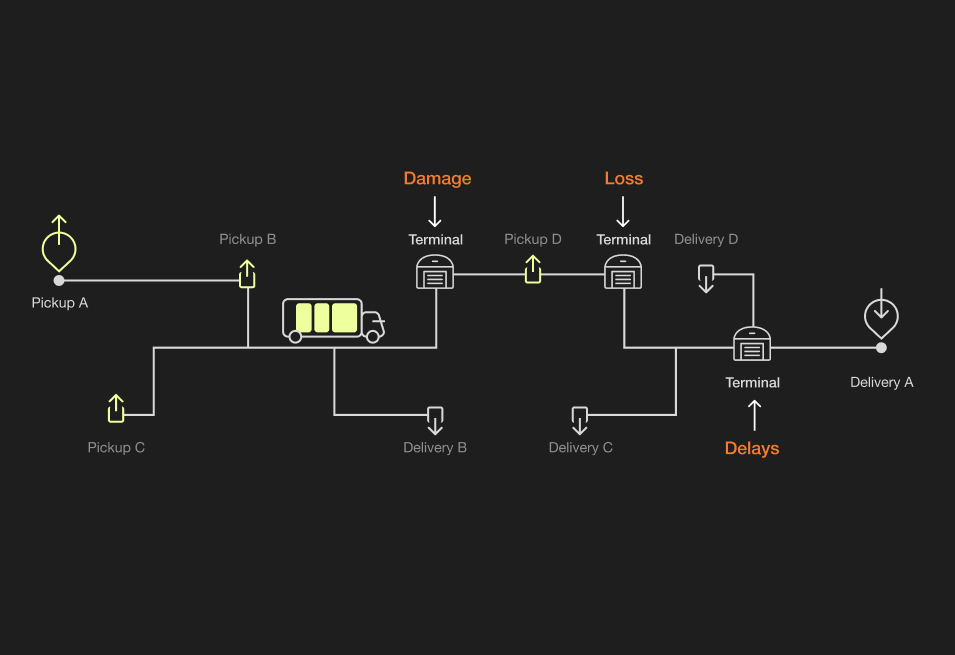Freight LTL Tracking How-To

Tracking shipments from online purchases eases the minds of customers and allows businesses and e-commerce companies the ability to be transparent, secure and ensure their customer’s goods, and protect themselves from wrongful claims.
In the less-than-truckload (LTL) industry, when it comes to tracking large shipments through United Parcel Service (UPS) freight, it is especially important customers are able to track their purchases and see where it is every step of the way. As the UPS freight shipping industry continues to undergo constant evolution, expected growth and technological innovation will likely improve this process even more so for both customers and managers.
How can I track UPS freight LTL?
Being able to track shipments once they hit the road has allowed customers all over the country to feel assured that their purchases will make it to them safely. Like any other online purchase, you can track a UPS freight tracking shipment from the palm of your hand using a variety of references. Some of them include:
- Purchase order number
- Customer reference number
- Shipper’s number
- PRO number
The most common way of shipping an LTL shipment is through its PRO number — several shipping companies will often ask you for this number, which is often used as your UPS freight tracking number. So, what is it?
PRO number
A PRO number stands for “progressive number.” It is a series of numbers — usually seven to ten digits long — that are used by all sorts of carriers as a reference for any freight shipping. PRO numbers are commonly associated with a SCAC code.
A SCAC code, which stands for “standard carrier alpha code,” is a code that is privately controlled by the U.S. to identify road transport companies. Typically two to four letters long, the National Motor Freight Traffic Association first developed the code in the 1960s as road transport companies began digitizing their data and records.
The PRO number follows the SCAC code, which essentially becomes a long barcode that allows for LTL tracking services. This sticker is placed on the pallets in the truck where it can be recognized for shipment. Throughout the shipment, the PRO numbers are scanned and used as a reference point for tracking the shipment as it moves throughout transfer facilities run by the carrier.
PRO numbers are typically created by the carriers in advance of the shipment. This makes moving freight faster and easier as companies and individuals can simply pull a PRO number from a set of PRO numbers that have already been created by the software system.
Sound familiar? It should, as PRO numbers basically operate in the same way as UPS tracking numbers. Not only will the PRO number be located on the shipment, but it will also be present on all of the paperwork associated with the shipment. The BOL, or bill of lading, is a document used by companies and individuals that confirms a cargo for shipment.
BOLs are maintained throughout the entire process by the company or person that is sending a shipment, the carrier and the receiver. At every step of the way, the PRO number will appear on the BOL. Not only does PRO number help in tracking a shipment, but it can also be used for billing purposes.
How tracking in the shipping industry has evolved
The United States first began to regulate the trucking industry in 1935 with the creation of the Interstate Commerce Commission. More than a decade later in 1948, Congress approved a bill that would permit carriers to take control of their prices and gain exemption from any anti-trust legislation. Because of this, the next 30 years there was no major growth in the number of carriers as the ICC would routinely reject new applications.
But by the 1970s, the industry started to slowly evolve under the Nixon, Ford, and Carter administrations as they enacted a series of acts to reduce the number of price-fixing and collective vendor pricing. We finally saw an influx of new carriers entering the market with the Motor Carrier Act of 1980, which essentially deregulated the trucking industry, allowing for intense price competition and lower profit margins.
The trucking industry evolved rapidly after this deregulation, as the number of carriers doubled between 1980 and 1990, with more than 40,000 new carriers in the U.S.
Though LTL shipping contributions of $26.5 billion seems minuscule when compared to the $700.4 billion industry of trucking as a whole, it is still seen as an extremely vital component in shipper’s supply chains.
The thousands of regional terminals and pick-up and delivery centers LTL shipments have to encounter are often seen as a significant barrier in its ability to flourish in the deregulated trucking industry. Though the number of carriers continues to increase, there hasn’t been a significant new entrant into the LTL sector since UPS and FedEx in the early 1990s.
Technology Improvements
The transportation and supply chain industry has seen constant evolution in their processes as more and more new technology emerges. All throughout the year, transportation and logistic companies employ workers who selflessly drive year-round, providing the country with an estimated 70% of domestic freight service.
From driverless trucks to environmentally-friendly, completely electric trucks, innovation has been at the core of the industry. Our tracking capabilities can follow packages in real-time. And while some see these innovations as potential threats, they also have the possibility to facilitate some of the processes and create more transparency between companies and customers.
The trucking industry continues to be on an upward trajectory, and it makes sense since the popularity of online shopping and other e-commerce ventures continue to rise. More drivers are logging in more hours and the income is beginning to rise slightly as demand for trucking continues to grow.
How we track in real-time at Flock Freight
At Flock Freight®, we focus on how we can utilize cutting edge technology to make the LTL shipping process more efficient and less of a hassle for our customers. To track a shipping service, simply search for your quote ID in your account - no matter the carrier - we receive automated, up to the minute updates from our LTL carriers that we populate directly in our app. Your shipment status is easily visible with up to date pick up and delivery dates. You can view all of the tracking information for all of your LTL shipments (no matter the carrier) directly in our app. No more calling, waiting on hold to get a PRO number. No more copying and pasting PO numbers from your database to the carrier’s website. Simply search, and the data is there.
We want to make it as easy for you as possible, and our app allows you to cut all of the above information out of your shipment tracking process!





